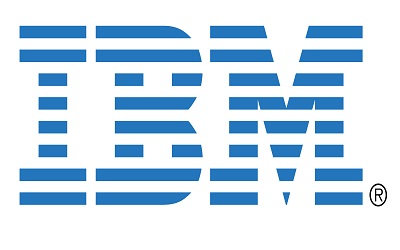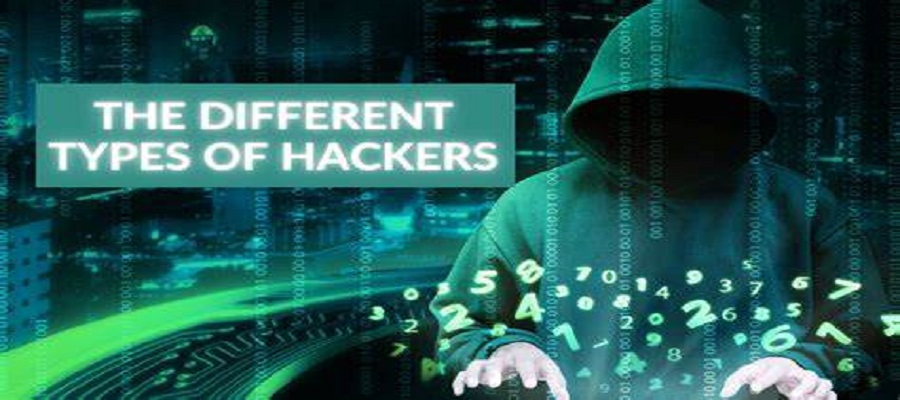E-Business
IBM Reveals 5 Innovations That Will Change Lives

IBM has unveiled the eighth annual “IBM 5 in 5” (#ibm5in5) – a list of innovations that have the potential to change the way people work, live and interact during the next five years.
This year’s IBM 5 in 5 explores the idea that everything will learn – driven by a new era of cognitive systems where machines will learn, reason and engage with us in a more natural and personalized way.
These innovations are beginning to emerge enabled by cloud computing, big data analytics and learning technologies all coming together, with the appropriate privacy and security considerations, for consumers, citizens, students and patients.
Over time these computers will get smarter and more customized through interactions with data, devices and people, helping us take on what may have been seen as unsolvable problems by using all the information that surrounds us and bringing the right insight or suggestion to our fingertips right when it’s most needed.
A new era in computing will lead to breakthroughs that will amplify human abilities, assist us in making good choices, look out for us and help us navigate our world in powerful new ways.
“We know more now than any other generation at any time has known. And yet, we struggle to keep up with this flood of increasingly complex information, let alone make sense of the meaning that is inherent in the massive amounts of data we are acquiring at ever faster rates,” said Dr. Dario Gil, Director, Cognitive Experience Lab, IBM.
“By creating technology that is explicitly designed to learn and enhance our cognition we will usher in a new era of progress for both individuals and for society at large.”
The IBM 5 in 5 is based on market and societal trends as well as emerging technologies from IBM’s Research labs around the world that can make these transformations possible.
Here are the five predictions that will define the future and impact us at a personal level:
The classroom will learn you
The number of individuals who don’t have a sufficient education is a major global challenge.
Estimates show that, on a global basis, nearly 2 out of every 3 adults have not achieved the equivalent of a high school education.
What if a student could go through their entire stages of education and master the skills critical to meeting their personal goals in life?
The classroom of the future will give educators the tools to learn about every student, providing them with a tailored curriculum from kindergarten to high school and on to employment.
In the next five years the classroom will learn about each student using longitudinal data such as test scores, attendance and student’s behavior on e-learning platforms, not just aptitude tests.
Sophisticated analytics delivered over the cloud will provide decision support to teachers so they can predict students who are most at risk, their roadblocks, and then suggest measures to help students conquer their challenges based on their individual learning style.
IBM scientists are already getting to work in the classroom. In a first-of-a-kind research project with Gwinnett County Public Schools, the 14th largest school district in the US, IBM will leverage big data analytics and learning technologies for population analysis of longitudinal student records.
The project aims to identify similarities of learning, predict performance and learning needs, then align specific content and successful teaching techniques to improve outcomes for each of the district’s 170,000 students and ultimately increase the district’s graduation rate.
***
Buying local will beat online
Shopping online is a national past time. Online sales topped $1 trillion worldwide for the first time last year, and are growing faster than in-store sales.
Online stores currently have an advantage in their ability to learn from the choices we make on the web.
Today, most physical stores are limited to the insights they can gain at the point of sale – and the trend of showrooming is making it harder to compete with online retailers who compete solely on price.
In five years, new innovations will make buying local du jour once again. Savvy retailers will use the immediacy of the store and proximity to customers to create experiences that cannot be replicated by online-only retail.
They will magnify the digital experience by bringing the web right to where the shopper can physically touch it.
In five years, retailers could rely on Watson-like technologies to equip sales associates to be expert about every product in the store.
With technologies such as augmented reality and the recently announced plan to open Watson as an app development platform, IBM is providing shoppers with better in-store browsing and buying experiences.
As mobile devices supported by cloud computing enable individuals to share what makes them tick, their health or nutritional needs, virtual closets and social networks, retailers will soon be able to anticipate with incredible accuracy the products a shopper most wants and needs.
As a result, stores will transform into immersive destinations with experiences customized for each individual.
And given their proximity and multiple footprints, stores will be able to offer shoppers a variety of fast pick-up or delivery options, wherever the customer is. Two day shipping will feel like snail mail.
***
Doctors will routinely use your DNA to keep you well
Cancer is a complicated disease and despite tremendous advances in research and treatment, the incidence of cancer has risen more than 10 percent since 2008, striking more than 14 million patients and claiming the lives of 8.1 million every year around the world.
Imagine if treatment could be more specific and precise – where computers could help doctors understand how a tumor affects a patient down to their DNA and present a collective set of medications shown to best attack the cancer.
In five years, advances in big data analytics and emerging cloud-based cognitive systems coupled with breakthroughs in genomic research and testing could help doctors to accurately diagnose cancer and create personalized cancer treatment plans for millions of patients around the world.
Smart machines will take the output of full genome sequencing and scour vast repositories of medical records and publications to learn and quickly provide specific and actionable insights on treatment options for oncologists.
Cancer care, personalized right down to a genomic level, has been on the horizon since scientists first sequenced the human genome, but few clinicians have access to the tools and time to assess the insights available at this level.
Within five years, cloud-based cognitive systems could make such personalized medicine available at a scale and speed never before possible.
IBM is beginning to explore this opportunity, working with health care partners to develop systems that could deliver genomic insights and reduce the time it takes to find the right treatment for a patient from weeks and months to days and minutes.
These systems are destined to get even smarter over time by learning about people, their genomic information and response to drugs – opening up the possibility to provide DNA-specific personalized treatment options for conditions such as stroke and heart disease.
Through the cloud, smarter healthcare could scale to reach more people in more locations, while also giving a global community of healthcare providers access to vital information.
***
A digital guardian will protect you online
Today we have multiple IDs and devices than ever before, yet security is highly fragmented, leaving us vulnerable. In 2012 there were more than 12 million victims of identity fraud in the United States.
Traditional approaches to security — passwords, anti-virus or a firewall – are not comprehensive.
These rules-based approaches fall short in several ways – they are designed to recognize only known viruses or known fraudulent activity and typically only look at a single source of data.
In five years, each of us could be protected with our own digital guardian that will become trained to focus on the people and items it is entrusted with, offering a new level of identity theft protection.
Security will assimilate contextual, situational and historical data to verify a person’s identity on different devices.
By learning about users, a digital guardian can make inferences about what’s normal or reasonable activity and what’s not, acting as an advisor when they want it to.
Today, IBM scientists are using machine learning technologies to understand the behaviors of mobile devices on a network in order to assess potential risk.
In the future, security is going to become more agile and contextual with a 360 degree of data, devices and applications, ready to spot deviations that could be precursors to an attack and a stolen identity.
***
The city will help you live in it
By 2030, the towns and cities of the developing world will make up 80 percent of urban humanity and by 2050, seven out of every 10 people will be a city dweller.
In five years smarter cities understand in real time how billions of events occur as computers learn to understand what people need, what they like, what they do, and how they move from place to place.
Soon it will be possible for cities and their leaders to understand and digest new information freely provided by citizens, knowing which city resources are needed, where and when, so the city can dynamically optimize around the needs of the citizens.
Mobile devices and social engagement will enable citizens to strike up a relationship with their city leaders.
This concept is already in motion, for example, in Brazil, IBM researchers are working on a crowdsourcing tool that allows users to report accessibility problems, via their mobile phones, to help people with disabilities better navigate challenges in urban streets.
While in Uganda, UNICEF is collaborating with IBM on a social engagement tool that lets youth communicate with their government and community leaders on issues affecting their lives.
These types of tools will become commonplace in helping city leaders identify trending concerns or urgent matters and immediately take action where needed.
E-Business
Jumia CEO says Black Friday Signals Nigeria’s E-Commerce Maturity

At the close of 2025, Temidayo Ojo, the CEO of Jumia Nigeria, reflected on a year-end shopping season that points to the growing maturity of the country’s e-commerce market. “Black Friday is no longer a single, short-lived spike in activity,” he said.

“It has become a familiar, anticipated moment in the retail calendar, where consumers shop deliberately and with confidence.”
Preliminary KPIs for the two months ended November 30, 2025, show strong year-on-year growth in both orders and Gross Merchandise Value (GMV), with GMV growth outpacing order growth. This indicates that customers are placing fuller, more considered baskets rather than shopping in fragmented transactions. Nigeria ranked among Jumia Group’s better-performing markets, with engagement remaining steady throughout the Black Friday period rather than spiking briefly and tapering off.
A key factor behind this performance is the growing familiarity of consumers with online shopping. Customers are increasingly leveraging platform features such as saved carts, brand stores, and price comparison tools to plan purchases in advance. This trend suggests that digital commerce is becoming embedded in everyday habits rather than being viewed as a one-off event.
Ojo also highlighted the role of Jumia’s JForce network in connecting digital commerce to local communities. “Our agents are critical to ensuring that customers across Nigeria, including secondary cities and smaller communities, have access to variety, consistent pricing, and reliable delivery,” he said. “During peak periods like Black Friday, JForce agents can respond faster, serve more customers efficiently, and build stronger local relationships. This isn’t just a distribution channel—it’s a pathway to sustainable income and inclusion.”
Reflecting on the overall performance, the CEO concluded: “What we’re seeing this year-end is steady engagement across categories, stronger consumer confidence, and partners like our JForce agents benefiting from increased activity.
“It confirms that Nigeria’s e-commerce ecosystem is maturing, growing in a more structured and resilient way. As the December Holiday Sale continues, we expect these patterns of familiarity, trust, and participation to sustain momentum and drive both commerce and community impact across the country.”
E-Business
Galaxy Backbone Tops FG’s Website Performance Ranking

Galaxy Backbone Limited (GBB) has been ranked first overall in the 2025 Federal Government Website Performance Scorecard.

This is a landmark achievement for Nigeria’s digital economy.
The ranking, conducted by the Bureau of Public Service Reforms (BPSR), is the definitive benchmark for digital excellence and transparency across all Ministries, Departments, and Agencies (MDAs).
Professor Ibrahim Adepoju Adeyanju, managing director and CEO of Galaxy Backbone, received the award during a ceremony in Abuja.
He described the feat as a validation of the agency’s“Nigeria First”data sovereignty strategy and its relentless pursuit of service excellence.
This recognition comes as the Federal Government intensifies its push to achieve a fully paperless civil service by December 31, 2025.
GBB has been the primary architect of this transition through its 1Gov Enterprise Content Management (ECM) platform, which now hosts the operations of almost all federal MDAs.
The award adds to a growing list of accolades for Galaxy Backbone in 2025, following its recent win of the “International Standard Excellence Award for Best IT Service Provider.”
As the central hub for government shared services, GBB’s performance serves as a blueprint for other agencies currently undergoing digital transformation.
With its expanded fiber-optic backbone now covering over 13 states and its secure cloud solutions, Galaxy Backbone remains the cornerstone of Nigeria’s vision to become a leading digital nation by the end of the decade.
E-Business
Nigeria Police Arrest Okitipi, Nigerian Allegedly Linked to Microsoft 365 Hack

Okitipi Samuel, a Nigerian man, has been taken into custody by the Nigeria Police Force for his alleged role in a global cyberattack on Microsoft 365 users.

Benjamin Hundeyin, Force public relations officer, disclosed this on Thursday in Abuja while briefing journalists on the outcome of investigations carried out by the National Cybercrime Centre of the Nigeria Police Force.
Hundeyin said the centre, under the leadership of Ifeanyi Uche, its director and Commissioner of Police, commenced investigations in collaboration with Microsoft, the Federal Bureau of Investigation, the United States Secret Service, and the United Kingdom’s National Crime Agency.
According to him, investigations revealed that a phishing toolkit known as “Raccoon 0365” was used to create fake Microsoft login portals to harvest user credentials and unlawfully access email accounts belonging to corporate organisations, financial institutions, and educational institutions in several countries.
“This investigation commenced following credible intelligence received from Microsoft USA through the FBI, indicating that a malicious phishing toolkit known as Raccoon0365 was being used to create fake Microsoft login portals, harvest user credentials, and unlawfully access the email accounts of corporate organisations, financial institutions, and educational establishments,” Hundeyin said.
He added that between January and September 2025, several reports of unauthorised access to Microsoft 365 accounts were traced to phishing emails designed to mimic legitimate Microsoft login pages, enabling business email compromise, internal phishing, data breaches, and other cyber-enabled fraud.
Hundeyin said digital forensic analysis and cryptocurrency tracing identified wallets connected to the illegal operation.
He noted that operatives were deployed to Lagos and Edo states, leading to the arrest of three suspects identified as Joshua, James, and Okitipi Samuel between September 20 and October 4, 2025.
“Following extensive digital forensic and technical intelligence analysis, the centre conducted cryptocurrency tracing that identified suspicious wallets connected to cash-out schemes.
“Acting on actionable intelligence, operational teams were deployed to Lagos and Edo states, resulting in the arrest of Joshua, James, and Okitipi Samuel. Searches at their residences led to the recovery of mobile devices, laptops, and other digital exhibits linked to the fraudulent scheme,” he said.
Hundeyin identified Okitipi Samuel, also known as “0365” and Moses Felix as the principal suspect and developer of the phishing infrastructure.
He added that investigations confirmed Samuel unlawfully used the email details of one of the arrested individuals without consent to register some of the accounts used in the operation.
The police spokesperson said further investigations revealed that the identities of Joshua and James were used without their consent.
“There was no evidence linking them to the creation or operation of the phishing scheme. They were victims of identity theft,” Hundeyin said.
He said a prima facie case had been established against Samuel for identity theft, unlawful access to computer systems, creation and distribution of malicious software, unauthorised interference with network data, and aiding and abetting fraud.
Hundeyin added that the suspect would be charged under relevant provisions of the Cybercrimes (Prohibition, Prevention, etc.) Act, 2024.
He said the suspect would be prosecuted in Nigeria, noting that the country has the capacity to enforce its cybercrime laws, although extradition could be considered if formally requested through due process.
Hundeyin assured Nigerians that the police, under the leadership of Kayode Egbetokun, inspector-general of Police, would continue to protect the country’s digital ecosystem and urged citizens to practise good cyber hygiene by being cautious when clicking links and sharing personal information online.
Speaking separately, Ifeanyi Uche, director of the National Cybercrime Centre, urged Nigerians to exercise caution online.
Uche advised members of the public to avoid clicking on links from unknown or unexpected sources, noting that such links often contain malware or phishing tools designed to compromise devices and personal data.
He warned that indiscriminate clicking of links or responding to unsolicited emails could lead to unauthorised access to personal and corporate accounts, urging citizens to “wash their cyber hands” by verifying sources before taking action online.

 Telecom2 days ago
Telecom2 days agoGoogle Finally Allows Users to Change Gmail Address, Keeps Data and Services Intact

 News2 days ago
News2 days agoInsomniaQ Spotlights African Creativity in Lagos

 General News2 days ago
General News2 days agoT2 Backs Youth Excellence as NCBC Wins Bosun Tijani Foundation Basketball Tournament

 E-Financial1 day ago
E-Financial1 day agoNigeria’s N58.18trn Budget and Rising Cost of Deficit Governance

 Telecom1 day ago
Telecom1 day agoNnaemeka Ani – The Architect of ‘Code and Courage’

 Telecom1 day ago
Telecom1 day agoMTN Nigeria Appreciates Partners, Customers at Lagos Prestige Experience

 Telecom8 hours ago
Telecom8 hours agoNCC Unveils Draft 5-Year Spectrum Roadmap, 60 GHz License-Exempt Guidelines to Boost Broadband, Innovation

 Telecom8 hours ago
Telecom8 hours agoNCC Grants 45 Days for Telecoms Firms to Fix Unapproved Shareholding Changes



























